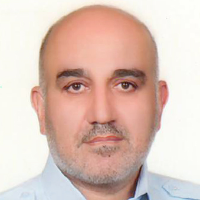Application of fuzzy modeling to identify the hydrothermal alterations in the Ramand region of Qazvin
Complete recognition of exploration criteria is considered as an important step in the systematic and scientific analysis of mineral potential mapping. The starting point of this analysis is recognition of the mineral potentials and the mechanism of their formation in different geological areas. In order to achieve such goals we can benefit from the known mineralization information. Integrating and analyzing all the data in the geographic information systems (GIS) can lead to the identification of promising mineral areas for future studies (San Soleimani et al., 2011). GIS can be used to organize, process, analyze and integrate the results of geological, geochemical and geophysical, tectonic and alteration studies in order to identify and evaluate the potential of different minerals (Bonham Carter, 1998). The aim of this paper is to apply the fuzzy integration method in GIS with using all the information, without the need to simplify them, in less time and with acceptable accuracy in order to recognize mineral potentials in the Ramand region. Investigation of mineral potentials in this area with using fuzzy logic in addition to the scientific-research aspects, can provide the discovery of appropriate patterns for other mineral resources in Iran.
The first step in any exploration project is that mapping is done with the aim of optimal potential to provide a model for the exploration of possible deposits in the region. This process in next steps will be continued with an extraction of useful information from various data that are contained in the database and this done work is done based on the properties of the elements under prospecting and the relevant exploration models. However, in the final stage, the combination of these maps is based on different models (Bonham Carter, 1998). The pre-requisite for the production of the mineral potential map, is to determine the weight and value which reflects the relative importance of the data classification (Hosseinali and Alesheikh, 2008). According to the study's default that is modeling with using fuzzy logic, a range of values between zero and one can be used to express the degree or the value of a collection (Novriadi and Darijanto, 2006) This is such that zero means lack of full membership and value of one is meant to be a full member of the collection. So, other set members can also be allocated values between zero and one and based on the degree of their membership to the set. So, it can be said that in the mining exploration, membership values are used to indicate the relative importance of each map as well as the relative importance of each class of a single map (Bonham Carter, 1998). Exploratory layers produced in GIS (in the fuzzy theory section), appear in the role of fuzzy sets and are combined by fuzzy operators (Table 1). The combining layers in the fuzzy method express the concept from the optimal options.
In this study, some of the geo-referenced data consisting of geological data, remote sensing, tectonic and geophysical data have been used. Geological data for separate lithological units in the region and the identification of faults, remote sensing data to identify hydrothermal alterations and fault lineaments and airborne geophysical data in order to detect magnetic fault lineaments and check the changes of magnetic susceptibility related to hydrothermal alterations are used so that after collecting and entering data, processing the necessary studies has been carried out on them. Finally, by combining the results of each layer and giving the fuzzy weighting to them based on their importance in mineralization and the use of the fuzzy algorithm and gamma (the fuzzy operator) in GIS, the final map is obtained to identify the potential areas with using it in the Ramand region. The possibility to acquire the exploration pattern of base and precious metals is provided in the mineral-prone areas.
In this study, there was a lot of exploration of information such that the decision to determine the potential points and continuing the exploration activities had been made very difficult. Thus, with use of the fuzzy integration method in GIS, all of the information were managed without any need to simplify them, in less time and with acceptable accuracy. Fuzzy logic is a method based on expert knowledge that is used for integration of exploration data and producing the optimal potential map of the Ramand regional reserves. It points to promising and priority areas for accurate and detailed information. Therefore, it is better to carry out exploration operations and reduces the cost and time as well as expedition to decision-making. And accuracy is very effective.
- حق عضویت دریافتی صرف حمایت از نشریات عضو و نگهداری، تکمیل و توسعه مگیران میشود.
- پرداخت حق اشتراک و دانلود مقالات اجازه بازنشر آن در سایر رسانههای چاپی و دیجیتال را به کاربر نمیدهد.



